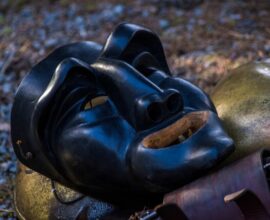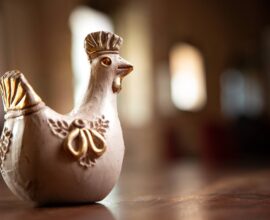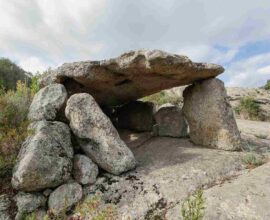Blue Zone: what they are and why Sardinia is part of it
Blue Zone: why Sardinia is considered a Blue Zone
Sardinia, together with the village of Loma Linda in California, the peninsula of Nicoya in Costa Rica, the island of Icaria in Greece and the island of Okinawa in Japan, is part of the so-called Blue Zone, Italian Blue Zone.
The island being considered a Blue Zone, the merit doesn’t go to the beautiful sea of Sardinia, but to the life expectancy here, which is higher than the world average. The term Blue Zone indicates those demographic and/or geographical areas of the world, identified by the scholar Dan Buettner, in which there is a higher concentration of centenarians.
The concept of Blue Zone comes from the demographic study on human longevity conducted by Dr Gianni Pes and Professor Michel Poulain, published in the multidisciplinary journal Experimental Gerontology. According to the analysis by the two researchers, the largest number of people over ninety years old is in the province of Nuoro, in the mountainous areas of the sub-regions Barbaricina d’Ogliastra and Barbagia di Ollolai.
In Ogliastra, the places with a high number of centenarians included in the blue zone are Villagrande Strisaili, Arzana, Talana, Baunei, Urzulei, Ulassai and Perdasdefogu. In the Province of Nuoro the centers identified in the blue zone are Tiana, Ovodda, Ollolai, Gavoi, Fonni, Mamoiada, Orgosolo, Oliena, all part of the Barbagia of Ollolai.
- apart from living longer, the residents of the Blue Zones enjoy a healthier old age and have less chance of suffering from diseases that can be fatal in the rest of the world.
So what’s the secret behind blowing out one hundred candles or even succeeding in the ambitious health goal? Let’s find out more about the long-life elixir that joins places so distant from each other.

Blue Zone: what are the secrets of longevity
The researches of Gianni Pes and Michel Poulain explain that the populations of the Blue Zones live longer because they have some characteristics in common that contribute to their longevity:
- Regular physical activity and little use of public and private means of transport, moving mainly on foot. Moreover, we must remember that Sardinians also devote their time to activities such as grape pressing and garden care;
- little or no smoking combined with a diet that tends to semi vegetarianism and provides few fats and zero preservatives. The diet of people living in the Blue Zones consists of beans and vegetables plus goat cheese and wholemeal bread. The consumption of meat, which must come only from farms in the area, is moderate. Also, each dish is served with a good glass of Cannonau, a red wine rich in polyphenols whose antioxidant action is three times higher than wine produced from other grapes;
- A strong religious faith, the centrality of the family and the perception that, within a social structure that favours human relations, it is possible to take care of each other.
The life of the Sardinian centenarians and the relationship between longevity, food care and a healthy lifestyle have attracted the interest of many people such Zac Efron, actor, singer and American film producer, and the protagonist of “Zac Efron: on the ground, a documentary filmed in the countries of Barbagia now available on Netflix, the famous streaming platform on demand.
In his trip to Sardinia in search of the elixir of life, the actor meets 97-year-old Francesco Paba, a pastor and former plane pilot during the Second World War, who lived on the island his entire life and is considered a local legend.
Even the famous American television station CNN made a report on the centenaries of Sardinia, focusing on the value of the social network that surrounds the elderly. While Zac Efron highlighted the importance of nutrition and physical activity in their lives, American journalists preferred to focus the spotlight on the role played by the Blue Zone community.
The CNN documentary analyzes the studies conducted by Dr Chiara Fastame and Dr Paul Hitchcott, researchers of the Department of Pedagogy, Psychology, Philosophy of the University of Cagliari, from which emerges a very interesting fact: “The elderly of the “blue zone” are repositories of knowledge and traditions and as such, are still productive and socially involved in different activities”, therefore considered a resource by their community, because
Moreover, according to Fastame and Hitchcott, the elderly living in the inner areas have a better memory, suffer less from depression and are more satisfied than the peers in rural areas of Northern Italy.
The documentary is accompanied by an article entitled The centenarians dominating a region of Sardinia, by Vivien Jones, reporting some statements of researchers.
Do you want to know the secrets of longevity and have a dreamy holiday in paradise? Discover the Forte Village Resort in Sardinia.






